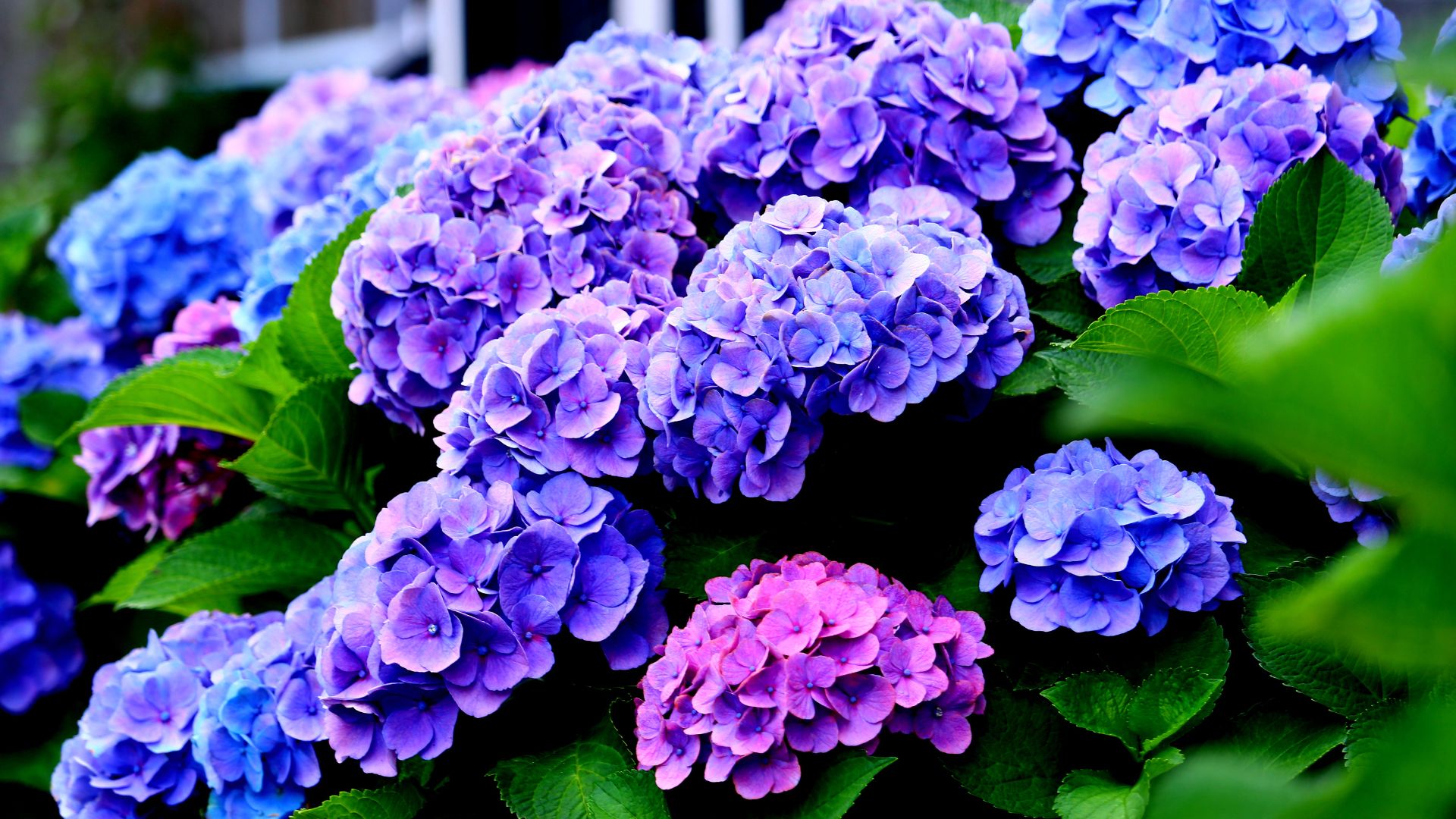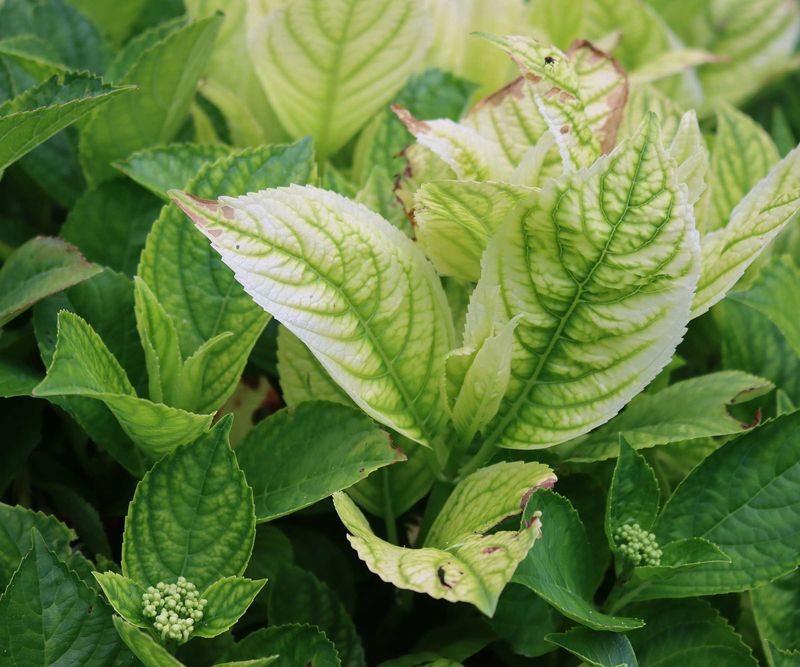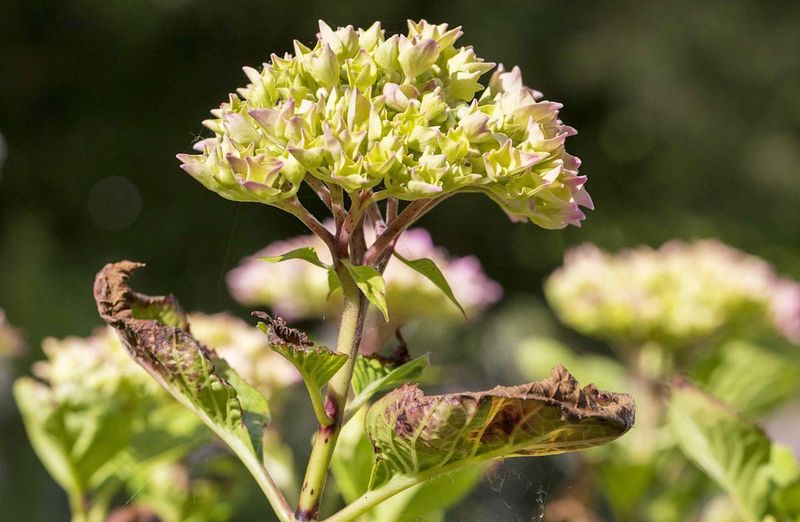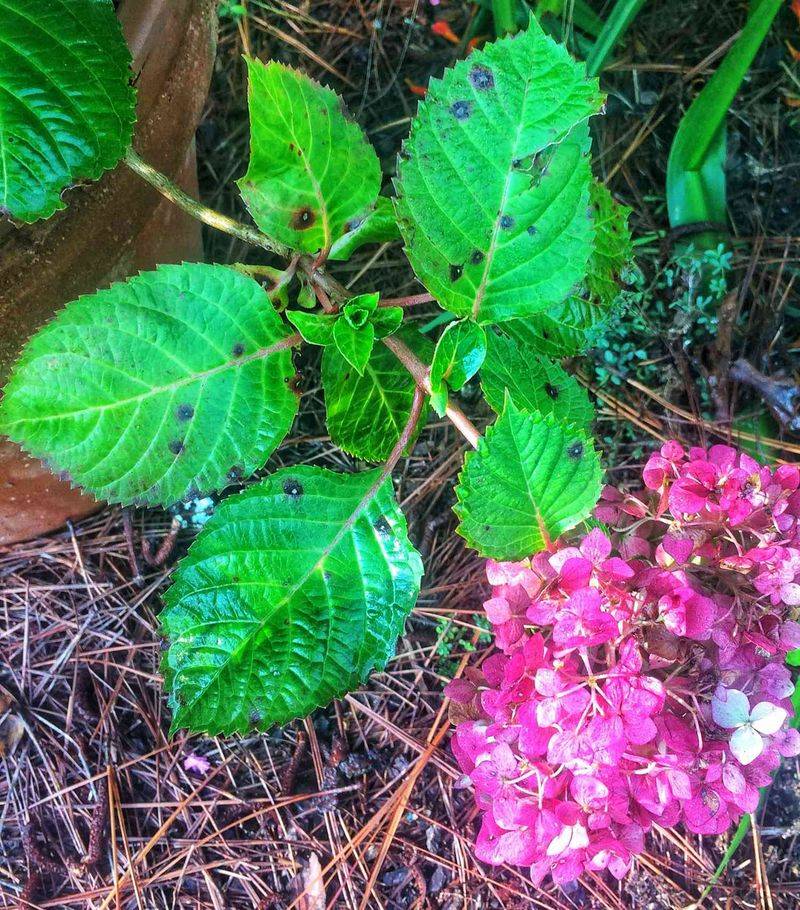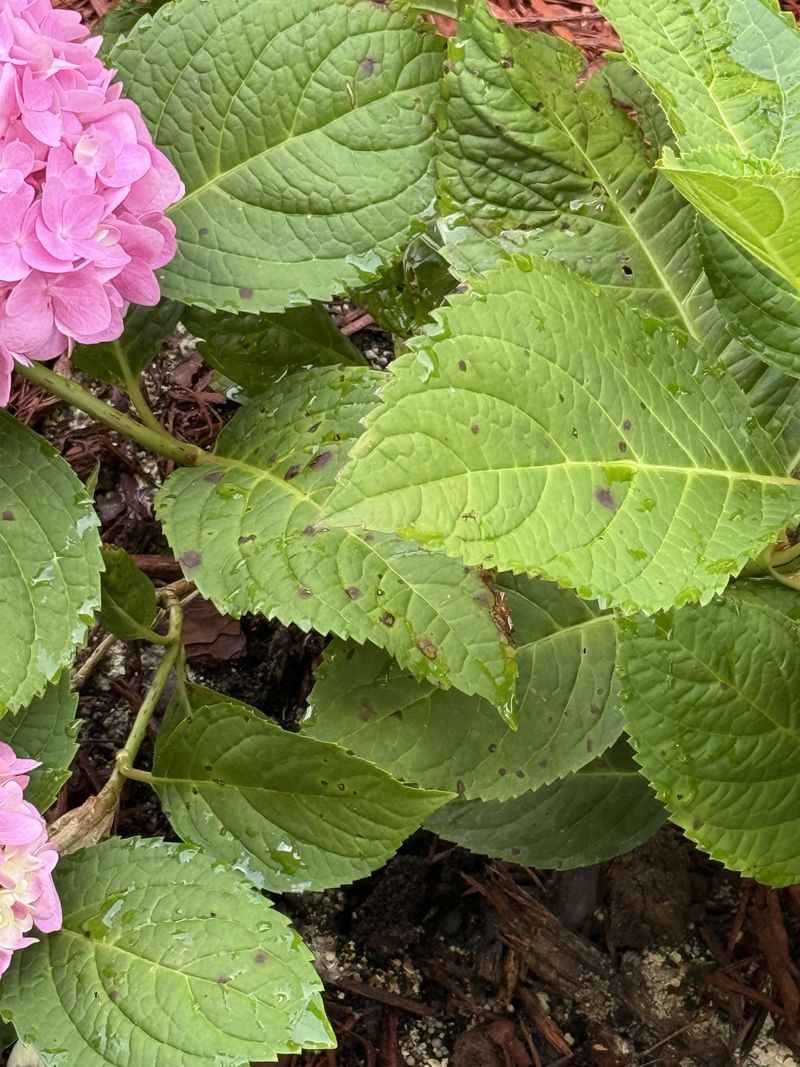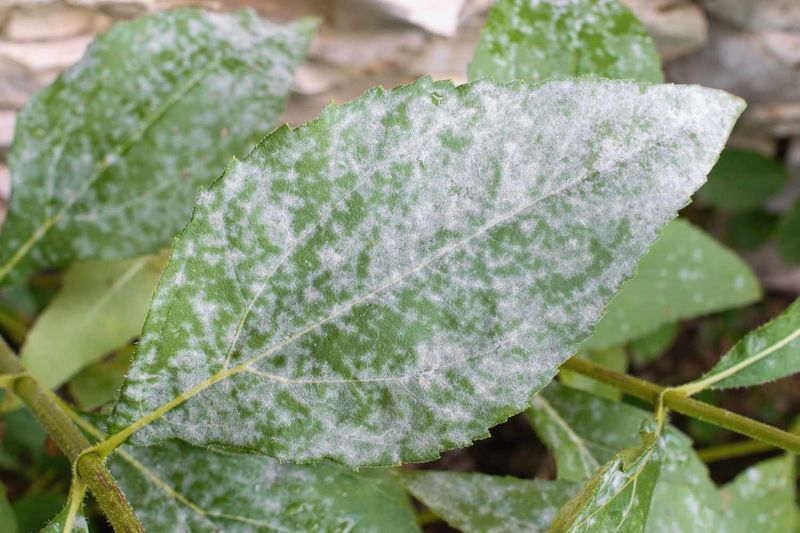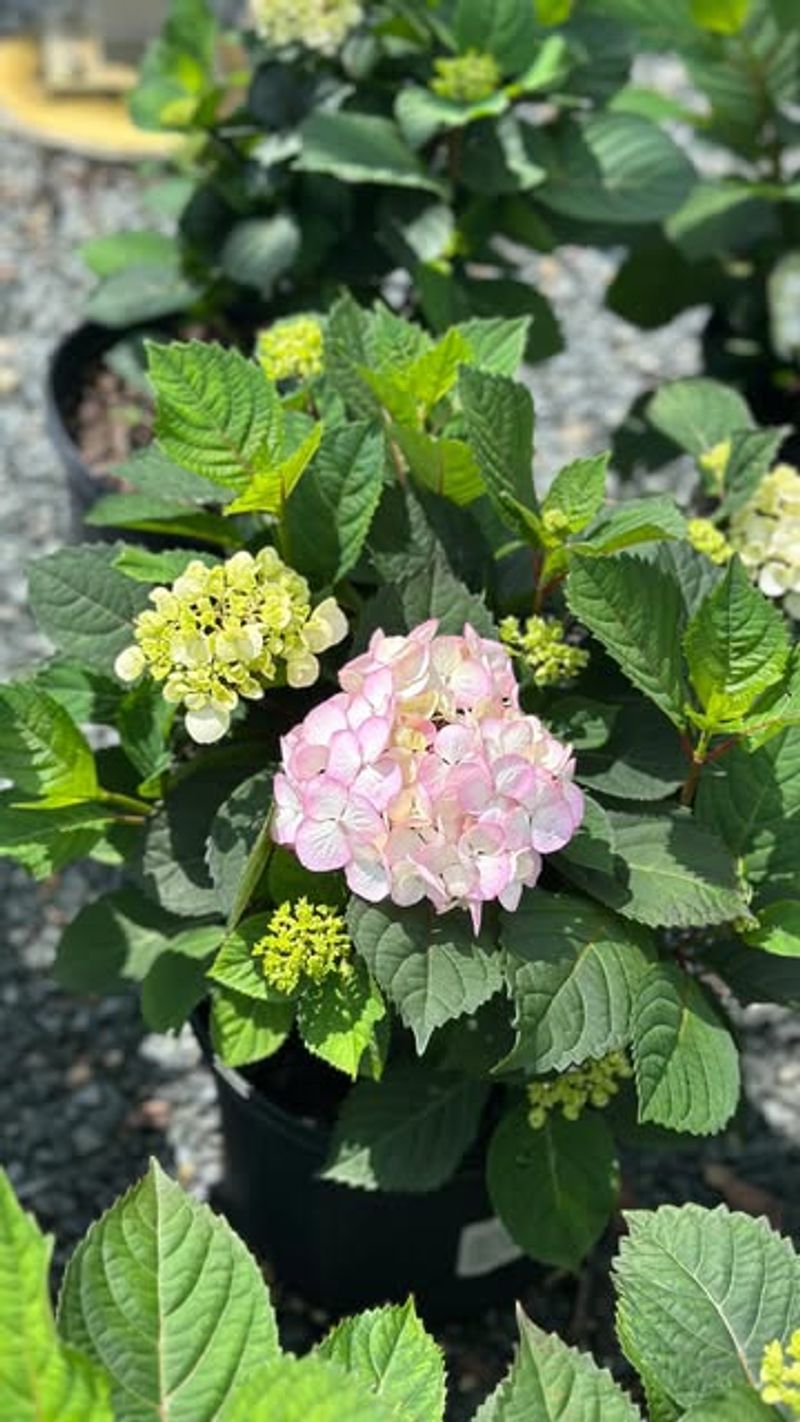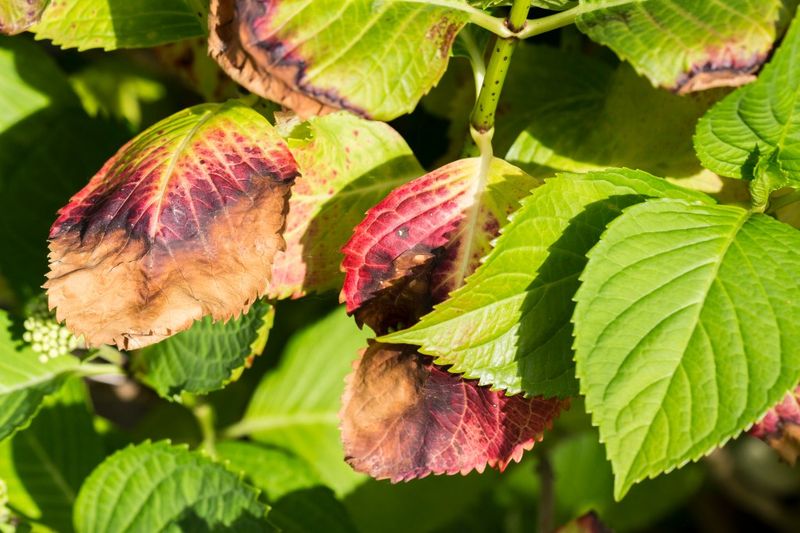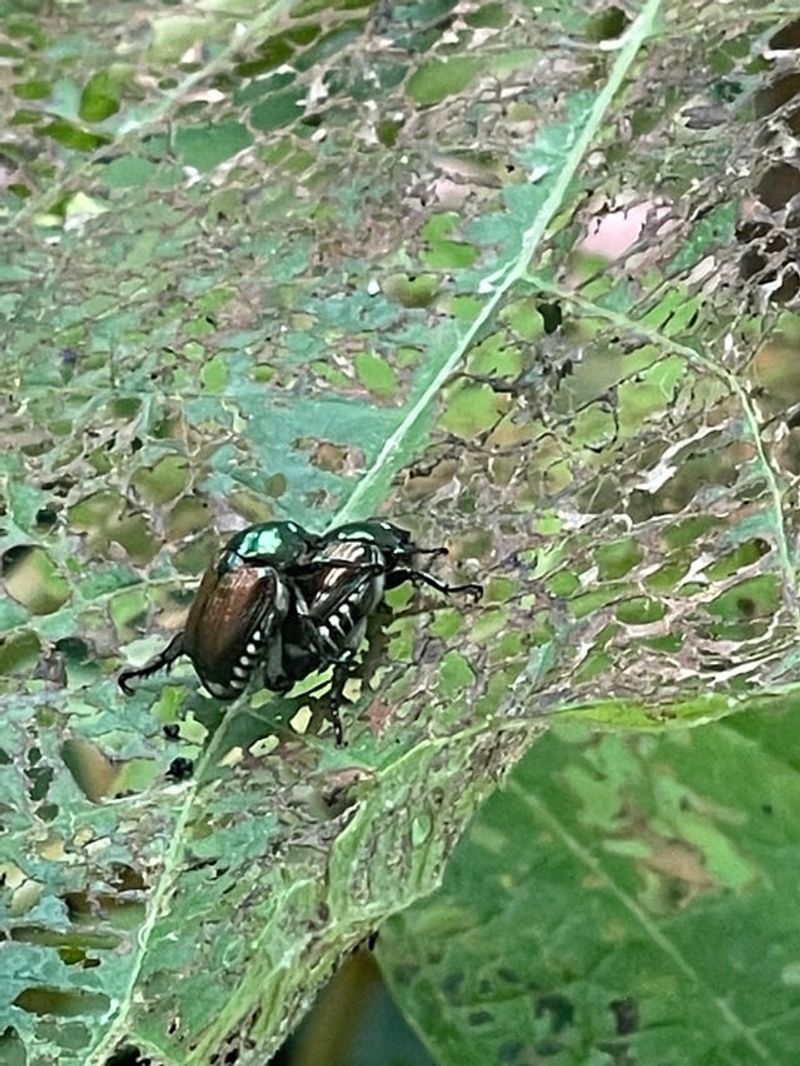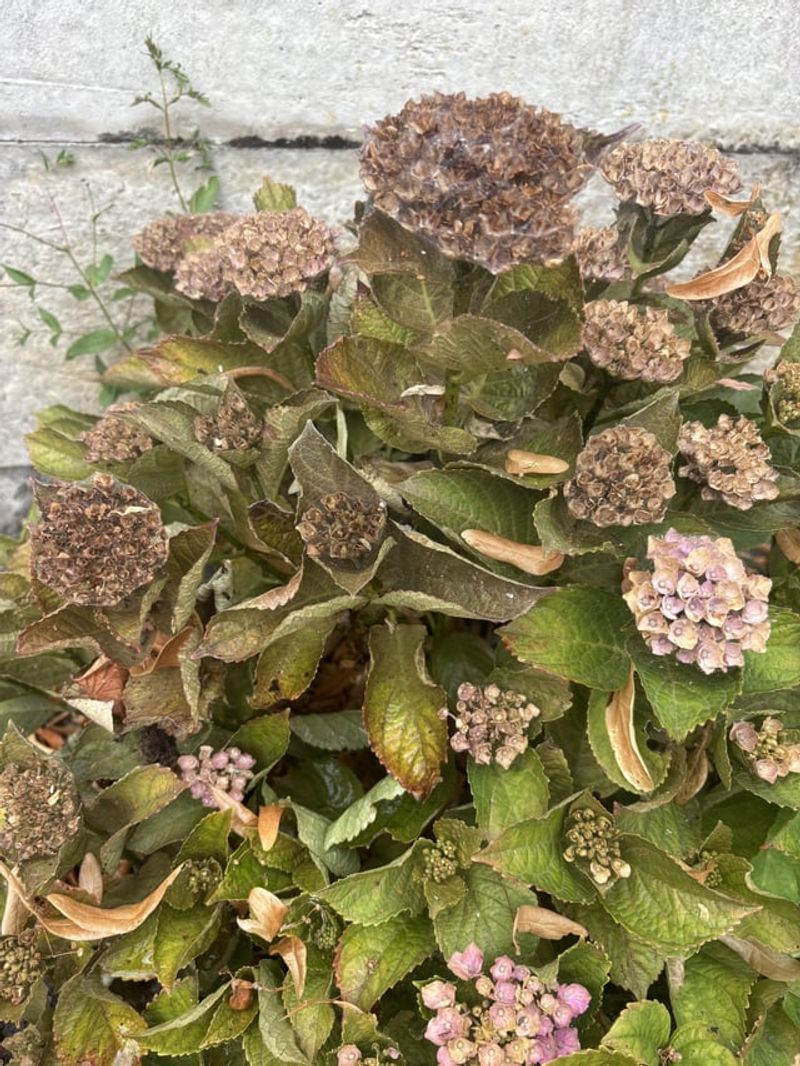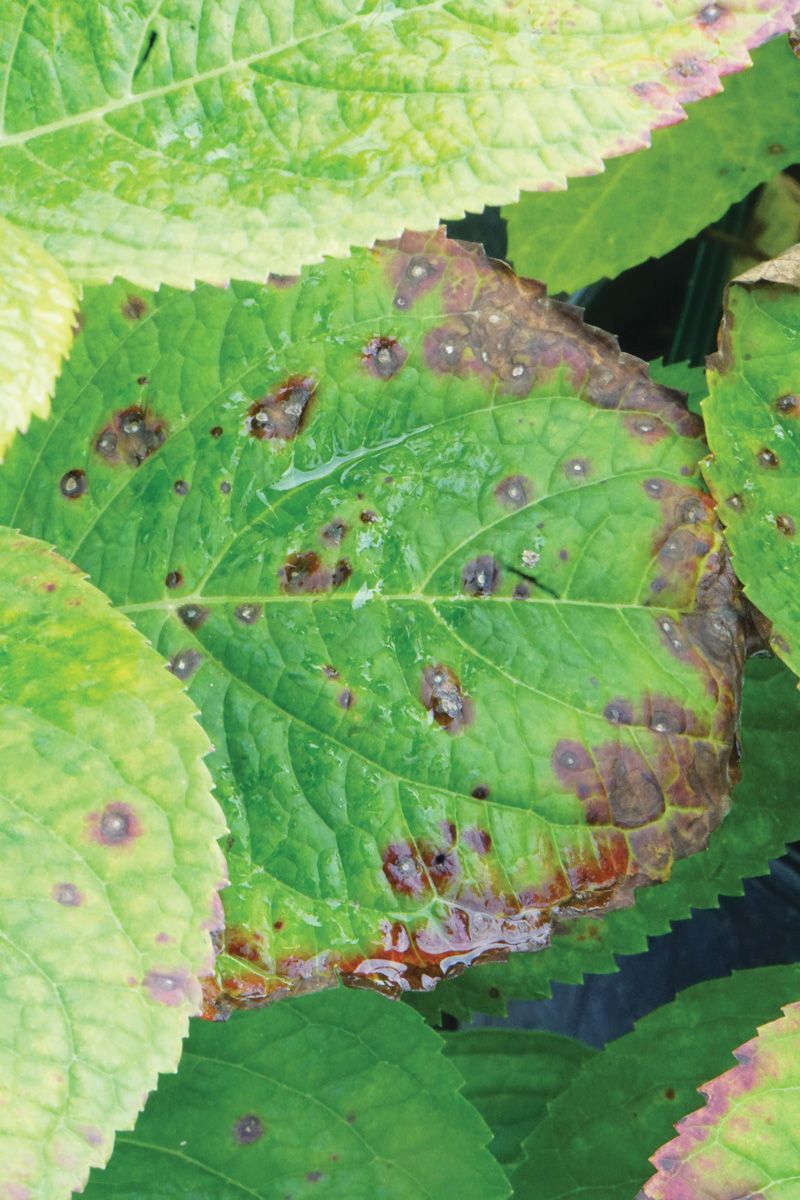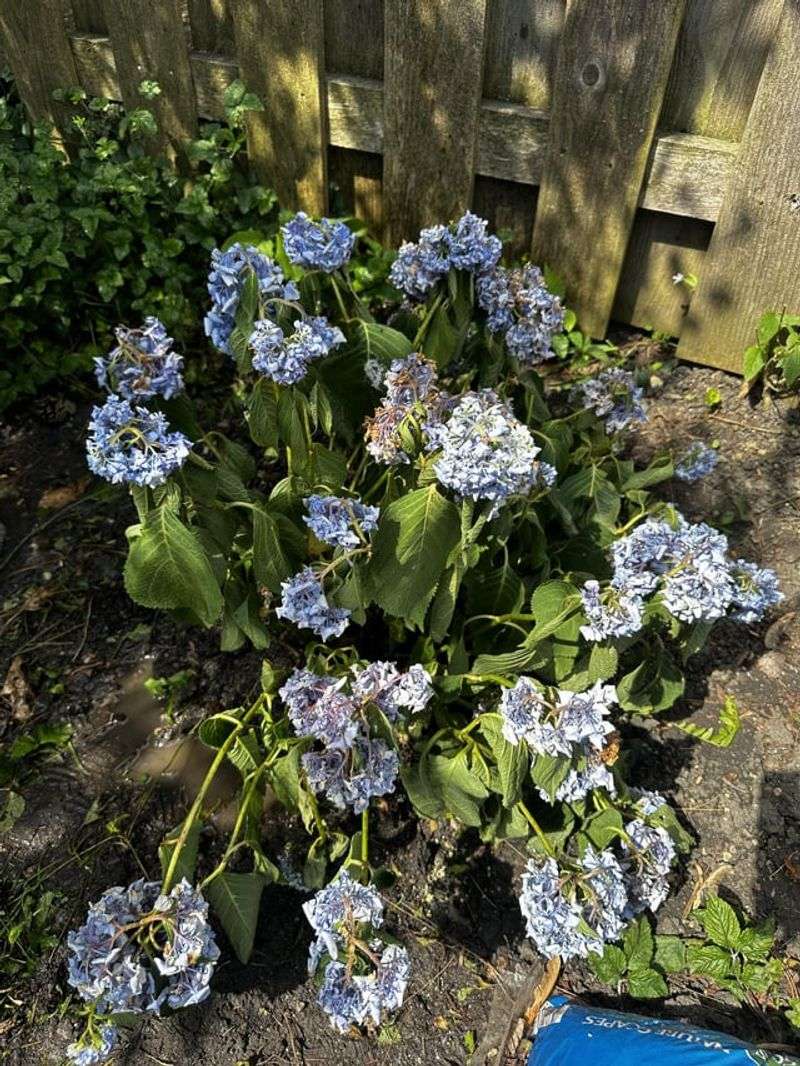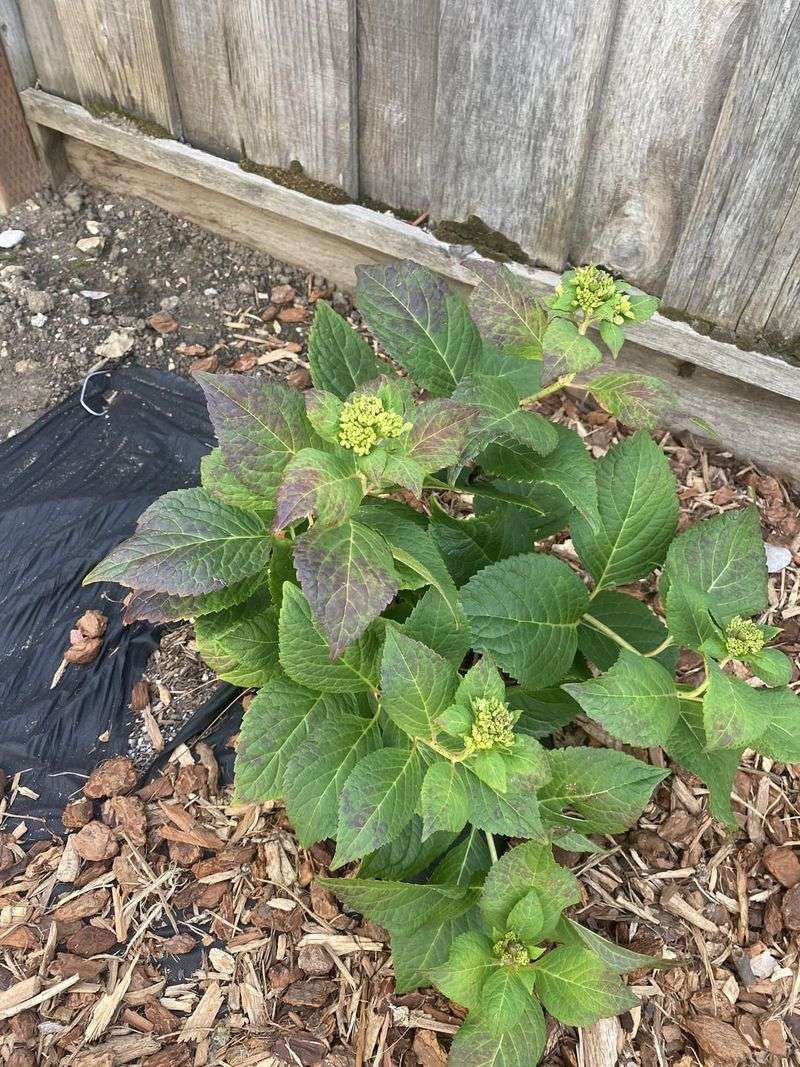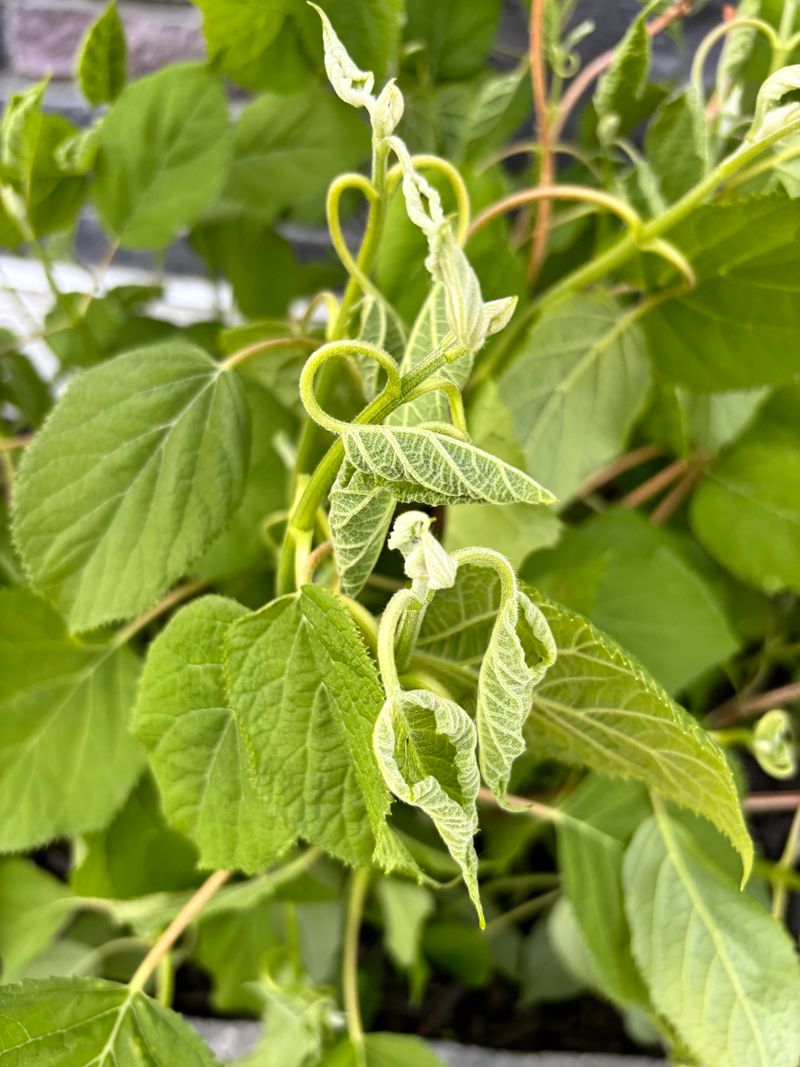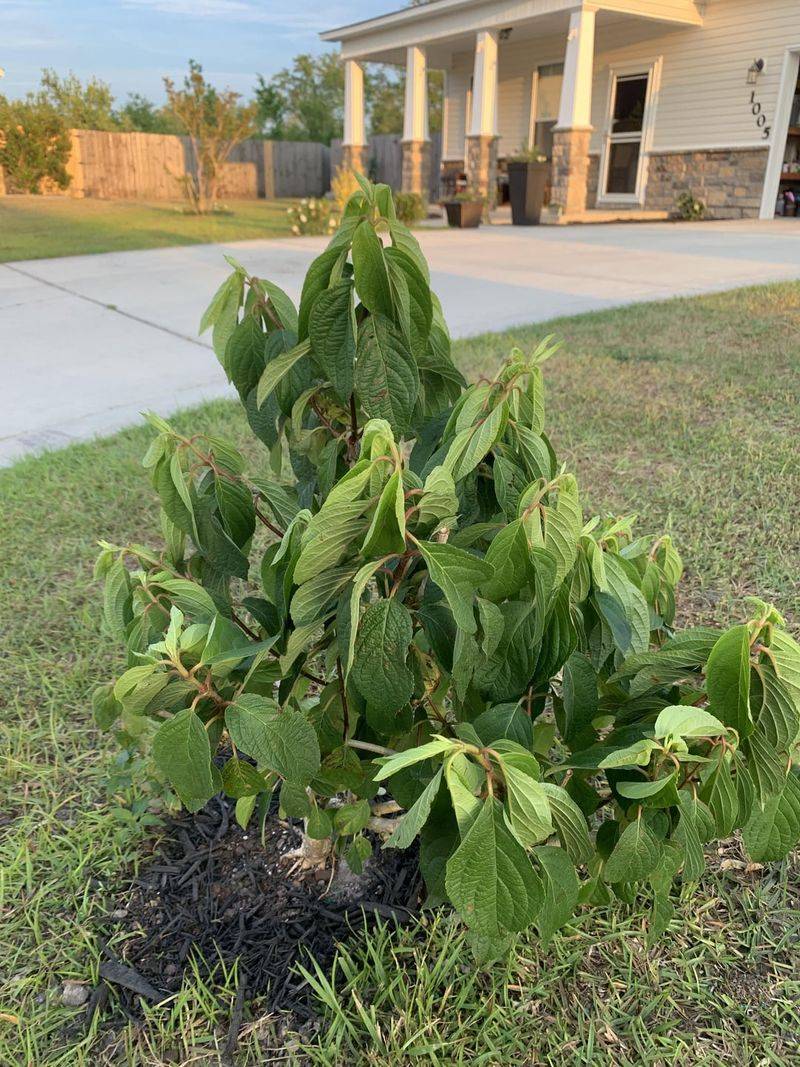Growing hydrangeas in South Carolina is no walk in the park. Between intense heat, sudden rainstorms, and challenging soil, leaf issues pop up fast—and they’re not always easy to decode. Even seasoned gardeners find themselves stumped from time to time.
But don’t count those blooms out just yet. Hydrangeas are resilient, and most leaf problems can be fixed with a little know-how. With the right approach, you can nurse your plants back to health and enjoy that lush Southern charm all season.
I’ve tackled these issues firsthand in my Palmetto garden, from crispy edges to mysterious spotting. Now I’m sharing the fixes that actually work—so your hydrangeas don’t just survive, they thrive.
1. Chlorosis (Yellow Leaves, Green Veins)
Iron deficiency is the culprit behind those yellow leaves with pronounced green veins. Our South Carolina clay soils often have plenty of iron, but alkaline conditions lock it away from your hydrangeas.
Apply an acidifying fertilizer specifically for acid-loving plants or water with a solution of one tablespoon of white vinegar per gallon of water twice monthly. This gradually lowers soil pH, releasing trapped iron.
My Beaufort garden suffered from this until I started adding coffee grounds around the base of plants. The improvement was visible within three weeks, with new leaves emerging healthier and greener.
2. Heat Stress Leaf Scorch
Those crispy brown edges and tips are classic signs of heat stress, especially common during our brutal July and August afternoons. Hydrangeas simply can’t process water fast enough when temperatures soar into the 90s.
Create afternoon shade using shade cloth, planted companions, or temporary umbrellas during the hottest weeks. Water deeply at the soil level early in the morning, avoiding overhead sprinklers that evaporate quickly.
Living near Charleston, I’ve found that adding a 3-inch layer of pine straw mulch dramatically reduces leaf scorch by keeping roots cooler and retaining moisture longer than wood chips.
3. Cercospora Leaf Spot
Purple-brown spots with tan centers appearing first on lower leaves signal Cercospora fungus, which thrives in our humid South Carolina conditions. Left untreated, it spreads upward, causing premature leaf drop.
Remove and destroy affected leaves immediately. Improve air circulation by thinning interior branches and avoid overhead watering. Apply a copper-based fungicide labeled for ornamentals every 10 days during humid periods.
After losing half my hydrangea leaves to this disease in Greenville one particularly wet spring, I now space plants farther apart and use drip irrigation exclusively, which has virtually eliminated the problem.
4. Anthracnose Infection
Large, irregular brown splotches that appear water-soaked before drying to a papery texture signal anthracnose. This fungal disease explodes during our warm, rainy South Carolina springs, especially in areas with poor air circulation.
Prune affected leaves and stems well below damage. Clean your tools with alcohol between cuts. Apply a fungicide containing chlorothalonil at first sign of infection, repeating after rain.
My Myrtle Beach hydrangeas suffered badly until I installed a small garden fan that runs during still, humid mornings. The improved airflow has reduced infections by at least 80% over the past two seasons.
5. Powdery Mildew Invasion
White powdery coating on leaves that eventually causes curling and distortion is powdery mildew. Unlike other fungal problems, it doesn’t need standing water—just our high South Carolina humidity, especially in partially shaded areas.
Mix one tablespoon of baking soda with one teaspoon of horticultural oil in a gallon of water and spray weekly as a preventative. For active infections, use a sulfur-based fungicide following label directions.
The bigleaf hydrangeas in my Columbia garden stayed mildew-free after I started removing the two lowest branches from surrounding trees, creating better morning sun exposure while maintaining afternoon shade.
6. Soil PH Color Confusion
Hydrangea leaves turning unusual colors—reddish-purple tints or deep green with yellowing—often indicate pH imbalance affecting nutrient uptake. This happens frequently in our varied South Carolina soils from the Upstate to the Lowcountry.
Test your soil pH with an inexpensive kit from any garden center. For more acidic conditions (blue flowers), add garden sulfur; for alkaline conditions (pink flowers), add garden lime following package rates.
My Oakleaf hydrangeas in Spartanburg developed odd purplish leaves until a soil test revealed extremely acidic conditions from nearby pine trees. Adding dolomitic lime solved the issue within a month.
7. Fertilizer Burn Damage
Brown, crispy leaf edges that appear shortly after feeding point to fertilizer burn. This happens when granular fertilizers contact wet leaves or when concentrated amounts accumulate near shallow hydrangea roots.
Flush the soil thoroughly with plain water to dilute excess fertilizer. Switch to a slow-release formula specifically for acid-loving plants, applying half the recommended amount twice as often.
After scorching my prized ‘Endless Summer’ with chemical fertilizer, I’ve switched to fish emulsion diluted to half-strength in the Midlands’ sandy soil. The plants respond beautifully without any burning, even during our driest months.
8. Japanese Beetle Destruction
Skeletonized leaves with only veins remaining signal Japanese beetle feeding. These metallic green pests arrive in June across South Carolina and can strip a hydrangea in days if left unchecked.
Hand-pick beetles in early morning when they’re sluggish, dropping them into soapy water. For larger infestations, apply neem oil every 7-10 days or use a pyrethrin-based insecticide following label instructions.
Planting garlic between my hydrangeas in Aiken has dramatically reduced beetle damage. They seem to avoid the strong smell, and as a bonus, the garlic helps deter deer that occasionally browse my garden.
9. Spider Mite Infestation
Tiny speckling on leaves that gradually turns bronze or yellow often indicates spider mites. These microscopic pests thrive in hot, dry conditions—exactly what we get in South Carolina summers, especially near buildings or walls that reflect heat.
Spray plants forcefully with water, focusing on leaf undersides where mites hide. For persistent problems, apply insecticidal soap or horticultural oil, making sure to coat both sides of leaves thoroughly.
I discovered my Summerville hydrangeas were spider mite magnets until I installed a simple drip irrigation system with misters that activates for just two minutes at noon, disrupting the mites’ lifecycle without wasting water.
10. Bacterial Leaf Spot
Water-soaked angular spots that turn reddish-brown with yellow halos indicate bacterial leaf spot. This pathogen spreads rapidly during our frequent South Carolina thunderstorms when rain splashes from soil to leaves.
Remove infected leaves promptly and apply a copper-based bactericide. Avoid overhead watering completely, and add fresh mulch to cover soil and prevent splash-up during heavy rains.
After losing several ‘Nikko Blue’ hydrangeas to this disease in North Charleston, I now grow all new plants in raised beds with excellent drainage and use only drip irrigation, which has eliminated the problem entirely.
11. Drought Stress Wilting
Curling, drooping leaves that don’t recover in evening coolness signal drought stress, not just temporary afternoon wilting. Our South Carolina clay might look moist on top but can form a hard barrier preventing water penetration.
Water deeply and slowly at soil level until moisture reaches 8-10 inches down. Add water-retaining polymers to planting holes for new hydrangeas, and apply 3-4 inches of organic mulch to retain moisture.
I’ve had great success in my Fort Mill garden using ollas—buried clay pots filled with water—next to established hydrangeas. They slowly release moisture directly to roots, dramatically reducing wilting during our dry spells.
12. Magnesium Deficiency Symptoms
Yellowing between leaf veins that starts on older, lower leaves often indicates magnesium deficiency. This happens frequently in our leached coastal South Carolina soils, especially after heavy rain periods.
Dissolve one tablespoon of Epsom salts in a gallon of water and apply as a foliar spray every two weeks. For longer-term correction, work half a cup of Epsom salts into the soil around each plant’s drip line in early spring.
My Hilton Head hydrangeas showed dramatic improvement within weeks after I started adding crushed eggshells to my compost tea. The calcium and trace magnesium gave them exactly what they needed for lush, green growth.
13. Sunscald Shock
Large, irregular bleached areas on leaves that eventually turn brown and crispy indicate sunscald. This happens when hydrangeas adapted to partial shade suddenly get exposed to direct sun, common after storm damage or neighbor’s tree removal.
Create immediate temporary shade using umbrellas, shade cloth, or even old bed sheets while you establish more permanent solutions. Water deeply every 2-3 days until plants adjust, and prune damaged sections once new growth appears.
When a large oak fell during a thunderstorm in my Orangeburg yard, my hydrangeas suffered terrible sunscald. Planting fast-growing sunflowers on their western side provided perfect temporary shade until smaller trees could be established.
14. Herbicide Drift Damage
Twisted, cupped, or strangely elongated leaves often result from herbicide drift. Even small amounts carried on breeze from lawn treatments can severely impact hydrangeas, especially in our windy South Carolina springs.
Rinse affected plants thoroughly with clean water if you notice herbicide application nearby. Stop using weed-and-feed products within 50 feet of hydrangeas, and switch to targeted weed treatments applied on still days.
My Rock Hill hydrangeas mysteriously deformed until I realized my lawn service was spraying on windy days. Creating a 6-foot mulched border around my hydrangea beds eliminated any further damage while reducing mowing time.
15. Transplant Shock Recovery
Wilting, yellowing, and leaf drop despite adequate water often signals transplant shock. Hydrangeas have sensitive, fibrous roots easily damaged during planting, especially in our hot South Carolina planting seasons.
Prune back one-third of the foliage to reduce water demands on damaged roots. Apply root stimulator following package directions, and maintain consistent soil moisture without waterlogging. Shade plants during afternoon hours for the first month.
Moving hydrangeas in August from my old Clemson home nearly killed them until I created mini-greenhouses using clear plastic gallon jugs with bottoms removed. The humidity dome effect helped them recover beautifully within weeks.

